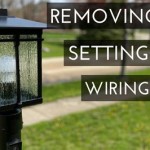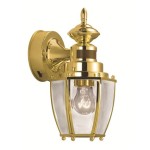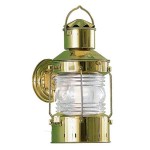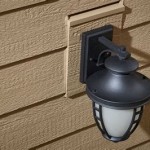```html
Outdoor Garden Solar Lanterns: Illuminating Your Space Sustainably
Outdoor garden solar lanterns offer a practical and aesthetically pleasing way to illuminate outdoor spaces. These lanterns harness solar energy, converting it into electricity to power their light source, typically an LED. This process eliminates the need for wiring or external power sources, making them a convenient and environmentally conscious lighting option for gardens, patios, walkways, and other outdoor areas. The market offers a diverse range of solar lanterns, differing in design, size, light output, and features, catering to varied aesthetic preferences and functional requirements.
Understanding the Technology Behind Solar Lanterns
The core components of a solar lantern include a photovoltaic (PV) panel, a rechargeable battery, a light-emitting diode (LED), and a control circuit. The PV panel absorbs sunlight and converts it into direct current (DC) electricity through the photovoltaic effect. This DC electricity is then stored in the rechargeable battery, typically a nickel-metal hydride (NiMH) or lithium-ion battery, for later use. The control circuit regulates the charging and discharging of the battery and manages the operation of the LED. When ambient light diminishes, the control circuit activates the LED, drawing power from the battery to produce light. The efficiency of each component plays a crucial role in the overall performance of the lantern. Higher-quality PV panels capture more sunlight, resulting in faster charging times and longer illumination durations. Similarly, battery capacity and LED efficiency directly impact the brightness and runtime of the lantern.
The type of solar panel used also influences performance. Monocrystalline solar panels, known for their high efficiency and sleek appearance, are often found in higher-end models. Polycrystalline solar panels, a more cost-effective alternative, are slightly less efficient but still provide adequate performance. Amorphous silicon solar panels are another option, offering flexibility and lower production costs, but they typically exhibit lower efficiency compared to crystalline panels. Choosing a lantern with a suitable solar panel type based on the intended application and budget is important.
Battery life is another significant factor to consider. NiMH batteries are a common choice due to their relatively low cost and decent performance, but they can suffer from self-discharge and a shorter lifespan compared to lithium-ion batteries. Lithium-ion batteries, while more expensive, offer higher energy density, longer lifespan, and better resistance to self-discharge. A larger battery capacity translates to longer runtimes, allowing the lantern to illuminate for more extended periods, especially during cloudy days or in shaded areas.
LEDs are the preferred light source in solar lanterns due to their energy efficiency, long lifespan, and availability in various color temperatures. LEDs consume significantly less power than traditional incandescent or halogen bulbs, allowing the lantern to operate for longer periods on a single charge. The color temperature of the LED, measured in Kelvin (K), affects the ambiance of the light. Warm white LEDs (around 2700K-3000K) produce a soft, inviting glow, suitable for relaxation and creating a cozy atmosphere. Cool white LEDs (around 4000K-4500K) offer a brighter, more focused light, ideal for pathways and areas requiring increased visibility. The lumen output of the LED, a measure of brightness, determines the intensity of the light. Consider the intended use of the lantern when choosing the appropriate lumen output.
Factors to Consider When Selecting Outdoor Garden Solar Lanterns
Selecting the right outdoor garden solar lantern involves considering various factors to ensure it meets specific needs and preferences. These factors include the design and aesthetics, the light output and color temperature, the battery life and charging time, the weather resistance and durability, and any additional features.
Design and aesthetics play a significant role in choosing a lantern that complements the outdoor space. Solar lanterns are available in a wide array of styles, from traditional farmhouse lanterns to modern minimalist designs. Materials used in construction also contribute to the aesthetics and durability of the lantern. Common materials include metal, plastic, glass, and resin. Metal lanterns, such as those made from stainless steel or wrought iron, offer a classic and durable option. Plastic lanterns are typically more lightweight and affordable. Glass lanterns provide an elegant touch but may be more fragile. Resin lanterns are often designed to mimic natural materials like wood or stone, offering a durable and weather-resistant alternative.
The light output and color temperature should be selected based on the intended use of the lantern. For ambient lighting, a lower lumen output and warm white color temperature are typically preferred. For pathway lighting or areas requiring greater visibility, a higher lumen output and cool white color temperature may be more suitable. Some lanterns offer adjustable brightness levels or color temperature settings, providing greater flexibility. The distribution of light is also important. Some lanterns project light in all directions, creating a soft ambient glow, while others focus the light downwards, providing more directed illumination.
Battery life and charging time are critical factors to consider, especially in regions with limited sunlight. A lantern with a larger battery capacity and efficient solar panel will charge faster and provide longer illumination durations. Check the manufacturer's specifications for the estimated charging time and runtime under different conditions. Consider the typical weather patterns in the location where the lantern will be used and choose a model that can perform adequately even during cloudy or overcast days.
Weather resistance and durability are essential for outdoor lanterns that will be exposed to the elements. Look for lanterns with a waterproof or water-resistant rating, typically indicated by an IP (Ingress Protection) rating. A higher IP rating indicates greater protection against water and dust. Consider the materials used in construction and choose those that are resistant to rust, corrosion, and UV degradation. Ensure that the lantern is sturdy and can withstand typical weather conditions, such as wind, rain, and snow.
Some solar lanterns offer additional features, such as motion sensors, timers, and dimming capabilities. Motion sensors can activate the lantern when movement is detected, providing added security and convenience. Timers can automatically turn the lantern on and off at specific times. Dimming capabilities allow adjusting the brightness level to suit different needs and preferences. These features can enhance the functionality and versatility of the lantern.
Proper Placement and Maintenance for Optimal Performance
Proper placement and maintenance are essential for maximizing the performance and lifespan of outdoor garden solar lanterns. The location of the lantern significantly impacts its charging efficiency and illumination duration. Regular cleaning and maintenance will ensure that the lantern continues to function optimally.
For optimal charging, the solar panel should be placed in a location that receives direct sunlight for at least six to eight hours per day. Avoid placing the lantern in shaded areas or under trees, as this will significantly reduce its charging efficiency. Angle the solar panel towards the sun for maximum exposure. Ensure that the solar panel is free from obstructions, such as leaves, dirt, or snow, which can block sunlight and reduce charging efficiency.
Regular cleaning is essential to maintain the performance of the solar panel. Use a soft cloth or brush to remove any dirt, dust, or debris that may accumulate on the surface of the panel. Avoid using harsh chemicals or abrasive cleaners, as they can damage the panel. Clean the panel regularly, especially after periods of heavy rain or snow.
The rechargeable battery may need to be replaced periodically, depending on its lifespan and usage. Check the manufacturer's recommendations for battery replacement. Dispose of the old battery properly, following local regulations for electronic waste disposal. Consider using rechargeable batteries from reputable brands for optimal performance and longevity.
Inspect the lantern regularly for any signs of damage, such as cracks, leaks, or loose connections. Repair any damage promptly to prevent further deterioration. Protect the lantern from extreme weather conditions, such as severe storms or freezing temperatures. Store the lantern indoors during extended periods of inclement weather.
By following these guidelines for placement and maintenance, users can ensure that their outdoor garden solar lanterns provide years of reliable and sustainable illumination.
```
Outdoor Dandelion Solar Light

19 Solar Garden Lights To Add Some Twinkle Your Outdoor Space

Solar Watering Can With Lights Lanterns Outdoor Hanging Waterproof Garden Decor Flash Warm Light Stand Decorative Retro Metal Yard Decorations For Lawn Path

Solar Garden Light With Kettle Shape Hanging Lamp Outdoor Metal Lantern Fairy Lights Lazada Ph

6 Best Solar Lanterns Of 2024 Reviewed

The Best Solar Lanterns For Your Garden 2024

Outdoor Solar Lights Garden Powered Lamp Lantern Waterproof Landscape Lighting Pathway Yard Lawn Decoration Decorations Temu

Die Casting Aluminum Solar Garden Lights Outdoor Lanterns For Landscape Lighting China Made In Com

Solar Lantern Led Outdoor Garden Lamp Hanging Waterproof Light Hexagonal Decorative Lighting For Patio Lawn Hallway Golde Fruugo No

Traditional Outdoor Solar Lanterns For Garden Pathway Marco Paul
Related Posts







